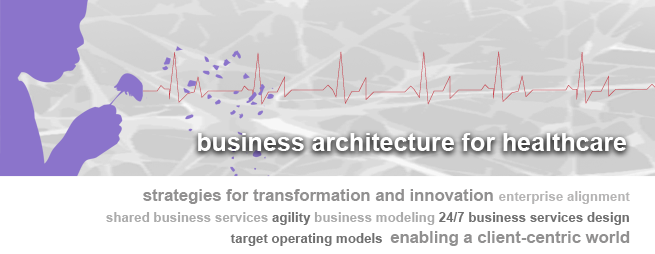| |

Course Outline | What your colleagues say | Related Articles | Course Fees |

Strategy, Innovation and Business Architecture
1. The innovation imperative.
Challenges of business agility.
- Agility and innovation – what do they really mean?
- Client and citizen-centric pressures
- Regulatory and compliance requirements
- What is your innovation culture?
- Opportunities for new business models
- The role of strategy for Business Architecture (BA)
- Enabling services, products and program innovation with BA
- BA as catalyst for change: Trailing strategy, values & technology trends
- The constraints to agility - Managing accidental and essential complexity
2. The Business Architecture manifesto.
Aligning strategy, design and projects.
- Defining Enterprise Architecture and Business Architecture
- Business Architecture mission, deliverables, and target groups
- The Business Architecture ecosphere:
- Enterprise, information, cloud services, technology, security and policy architectures
- BA’s critical contributions to EA
- EA and BA: Closing the strategy, design & implementation divide
3. Real World Business Architecture.
Drives and imperatives for business architecture.
- Transformation and innovation management
- Organizational design
- Portfolio management and rationalization
- Performance management and cost reduction
- Mergers, reorganizations and large-scale integration
4. Identifying a Strategic Roadmap.
Getting started: Analysis of business.
- Needs, goals, outcomes, outputs, and values
- Enterprise-level business architecture analysis: Identifying strategic drivers
- Value proposition and value chain analysis
- Service concept and service value chain
- Logic models and strategy maps
- Validating business goals
5. From strategy to Business Architecture.
Bridging the gap.
In this interactive workshop, team members use a real world
case study to understand the strategy of introducing a direct
self-service channel.
- Using Business Architecture for transformation
- Analyzing strategic direction and stakeholder needs
- Value chain and program analysis
- Impact of strategic changes on people, process and technology
6. Fundamentals of enterprise models.
Managing change.
- How architectures, frameworks and models tame complexity
- Mapping the future:
- As-is vs. To-be Business Architectures
- Overview of BA approaches
- The Business Architect as chameleon:
- Representing strategic, organizational and IT perspectives
7. Business services design.
Modeling for a client-centric world.
- Alignment of strategy and outcomes
- Meeting market or constituency needs
- Using service patterns
- Modeling valued outputs of the enterprise
- Aligning the outputs with intended outcomes
8. Understanding the value chain.
Designing target operating models.
- The extended enterprise
- Modeling value chains and core processes
- Assessing & modeling the impact of strategy on the current value chain
- Abstracting common/shared services from the current operating models
- Organizational implications for realizing target operating models:
- Designing vertical and horizontal accountabilities
- Managing outsourcing
- Building in trust: Security and privacy
9. Getting the semantics right.
Creating a shared understanding.
- The conceptual business model and its role
- Modeling for the bilingual Business Architect
- Business and technical language competencies
- Understanding the structural view
- Business components and their relationships
- Input to the enterprise information model
10. Lifecycle analysis.
The times they are a changing.
- Understanding the behavioral view
- The state transition model:
- Modeling behavior over time
- Combining semantic and state transition models
11. Modeling business processes.
Living in a world of distributed and virtual services.
- The critical role of Business Architecture in distributed services
- Understanding the functional view
- Businessand distributed use cases
- Implications for cloud applications and service-oriented architecture (SOA)
- Process and integration standards
12. Capturing policy and business rules.
Gaining enterprise agility.
- Environmental implications on strategy
- Impact of strategy changes on business & policy
- Externalizing policies and business rules
- Transparency of business processes
- Modeling business rules
- Business scenarios
13. From over-the-counter to 24/7.
A world of disintermediation.
- The challenge of conducting business anytime, anywhere with anyone
- Business network model:
- Implications for the technology architecture
- Workflow architecture
- Design/simulation of enterprise-wide workflows and business processes
14. Patterns in the business environment.
The power of reference models.
- The role of reference models
- From abstraction to generalization
- Government reference models
- Industry sector reference models
- Real world look at municipal reference models
15. Managing the transformation portfolio.
The reality of priorities.
- Roadmap to BA deliverables
- Coverage and granularity factors:
- Business analysis, project and portfolio management
- Building the right skill set: From BA to IT to change management
- The build-out: From projects to strategic portfolio management
16. Building the business blueprint.
Achieving the adaptive enterprise.
- Business modeling tools: Managing business design knowledge
- The reality of strategy dynamics:
- Ongoing adaptation in a client-centric world
- Sensitivity of Business Architecture artifacts and models to change
- Managing the portfolio of business artifacts
- Business Architecture governance
|
 Great stuff, very glad I came. Now to proselytize!” Great stuff, very glad I came. Now to proselytize!”
Shawn Winnington-Ball
Administrator
University of Waterloo
 Who should attend Who should attend
Senior Vice President/Director
Chief Information Officer (CIO)
Vice President/Director IS
IT Portfolio Manager/
Program Director
Strategic Planner/
Enterprise Architect
Information Systems Manager
Business Architect
IS/Technology Architect
IS/Technology Planner
Project Manager/Leader
Information Architect
Business Analyst
|
 back to top back to top

“I congratulate you on the high caliber of your speakers — they bring a wealth of knowledge to supplement the course material.”
Carol Lachapelle
Director, Information Management
NB Department of Transportation
“Absolutely excellent, current and immediately applicable.”
James Meck
Chief Architect
BAE Systems
“The pragmatic approach is helpful and appreciated.”
Carol Bingaman
Program Manager
Commonwealth of Pensylvania
(Intervista is now offering DAMA & EAIG members a 10% discount on all of our courses)
Course fees
|
3-Day Executive Session
|
|
|
Small teams
(5 to 9 participants: fee per participant).
Large teams inquire for additional discount.
|
$ 2795 |
Early enrollment
4 weeks prior to session date.
|
$ 2875 |
Regular enrollment
Must be received one day prior to session. No participant will be admitted into the course without prior payment arrangement.
|
$ 2915 |
Applicable taxes extra. All prices are in USD.
*Promotional offers cannot be combined with our discounts. Credit card payment required at time of registration.
|
|
|

Call 1-800-397-9744 to learn more about scheduling this course for your organization.

1. The innovation imperative
2. The Business Architecture manifesto
3. Real World Business Architecture
4. Identifying a Strategic Roadmap
5. From Strategy to BA
6. Fundamentals of enterprise models
7. Business services design
8. Understanding the value chain
9. Getting the semantics right
10. Lifecycle analysis
11. Modeling business processes
12. Capturing policy and business rules
13. From over-the-counter to 24/7
14. Patterns in the business
15. The transformation portfolio
16. Building the business blueprint

 Innovation, transformation and modernization: Innovation, transformation and modernization:
How do you lead change?
 Mapping the future with Business Architecture: Mapping the future with Business Architecture:
Agility vs. Innovation

 John Bruder John Bruder
John is a member of the Intervista faculty and has over 20 years of experience in the information technology industry.
Learn more about our faculty
 Peter Dyck Peter Dyck
Peter is a member of the Intervista faculty and has over 25 years of experience in the information technology and management consulting industries.
Learn more about our faculty

“Absolutely excellent, current and immediately applicable.”
James Meck
Chief Architect
“John did a great job. He was extremely flexible in adapting the material to the class.”
Chirstopher Riccio
Director Planning & Enterprise Architecture
Sodexo
“I congratulate you on the high caliber of your speakers — they bring a wealth of knowledge to supplement the course material.”
Carol Lachapelle
Director, Information Management
NB Department of Transportation
“Class was very well presented. Good content and a lot of knowledge that can be applied to my role.”
René Royer
Project Engineer
FedEx
“Great courses - lots of very useful information and tools.”
Carlyle Hogan
Enterprise Architect
Agriculture Financial Services Corporation
“The instructor, John Bruder, poured his heart and soul into the training. His experience & knowledge on the subject benefited the trainees. Lots of good examples and always good answers to all questions asked.”
Kathy McGibbon
Sr. Business Consultant
Ministry of Transportation

|

![]()
![]()

![]()
![]()